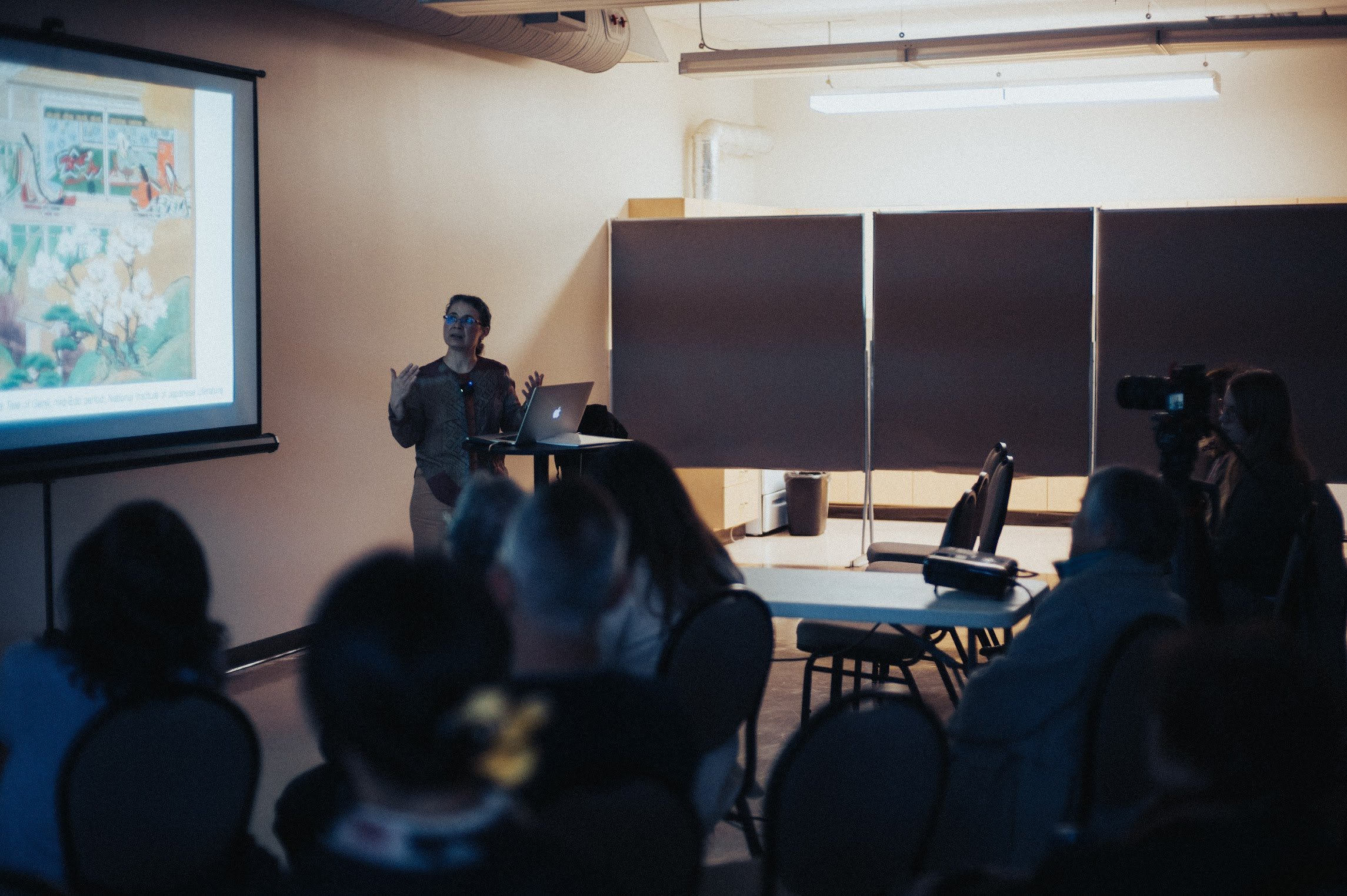Deep Dives with Dōjin Arts: Origins of Ikebana
Photo credit: Xun Yu 六入處感官美學研習社 The Six Sensorial Lab
November 3rd marks Bunka no Hi 文化の日 Culture Day in Japan – a public holiday to celebrate traditional Japanese culture. This year we decided to celebrate with a Deep Dive into the art of Ikebana – its history, its people, and its cultural treasures.
The program opened with a slide lecture tracing the history of floral arrangements as they developed from early ritual offerings to formal displays at the court of shogun Ashikaga Yoshimasa in the late 15th century.
First image: Bun’ami kadensho (handscroll detail), Muromachi period, 14th-16th century, Rokuōin Temple, Kyoto
Photos by: Xun Yu 六入處感官美學研習社 The Six Sensorial Lab
Our Executive Director, Maiko Behr, led us through a fascinating collection of images from ancient illustrated instruction manuals as well as photographs of treasured cultural properties demonstrating the deep connections between the evolving art of Ikebana (kadō) and its sister arts of tea (sadō) and incense (kōdō) as they took shape amidst the growing influence of Zen Buddhist philosophy and aesthetics.
Photos by: Xun Yu 六入處感官美學研習社 The Six Sensorial Lab
Bringing this art form to life in the present day, we were then treated to a live ikebana demonstration showcasing three “standing flower” forms – early Tatehana, traditional-form Rikka, and new-form Rikka – by Cecily Chang of the Ikenobo school, the oldest school of ikebana and a lineage that was formalized during this seminal period in Japanese cultural history. As Cecily carefully built each arrangement, she highlighted for us many of ikebana’s guiding principles, such as harmony, balance, and the rich symbolism of nature's elements and the connection between humans and the natural world. Through her demonstration we gained a deeper appreciation for how ikebana continues to evolve while preserving its deep cultural roots.
Thank you to our presenting partner Nikkei National Museum & Cultural Centre and to all who joined us in this floral celebration of Bunka no Hi 文化の日 Culture Day!
About the Educators:
Maiko Behr has worked as a Japanese to English translator, curator, and consultant specializing in Japanese arts for over twenty years. She is the owner of SaBi Tea Arts, where she teaches chanoyu (Japanese tea ceremony) in the Omotesenke tradition and kōdō (Japanese incense ceremony) in the Senzan Goryū tradition. In the non-profit sector, Maiko has served locally on the board of directors of the Tomoe Arts Society for over ten years, and has worked and volunteered for various Japanese and Asian arts-related non-profit associations, museums, and private collections in Canada and the US.
Cecily Chang is a senior Professor of Ikebana, Ikenobo School. She has studied Ikebana for more than 40 years and has been teaching since 1995. She specializes in Japanese flower arrangement (Ikebana) and custom floral pieces for weddings and special events. Cecily was the Vice President of the Vancouver Ikebana Association in 2006/2007 & 2018/2019; and President for the 2008/2009, 2020/2021 seasons. She has been the President of Ikenobo Ikebana Society of Vancouver since 2020.
We acknowledge the financial support of the Province of British Columbia.










